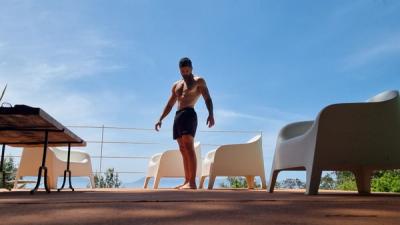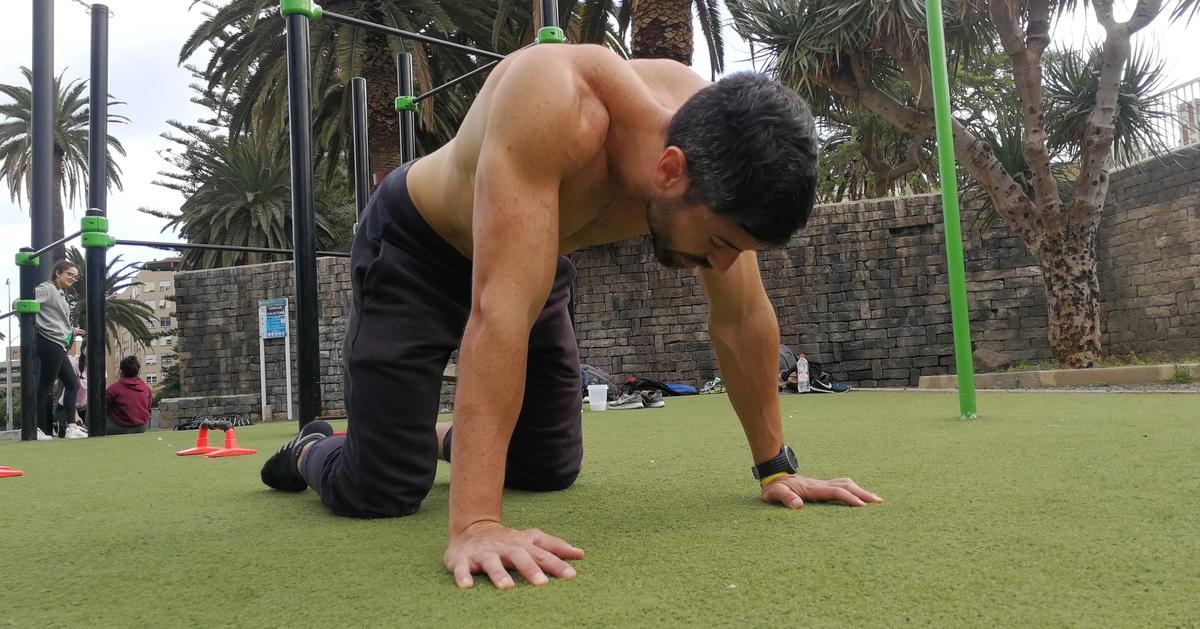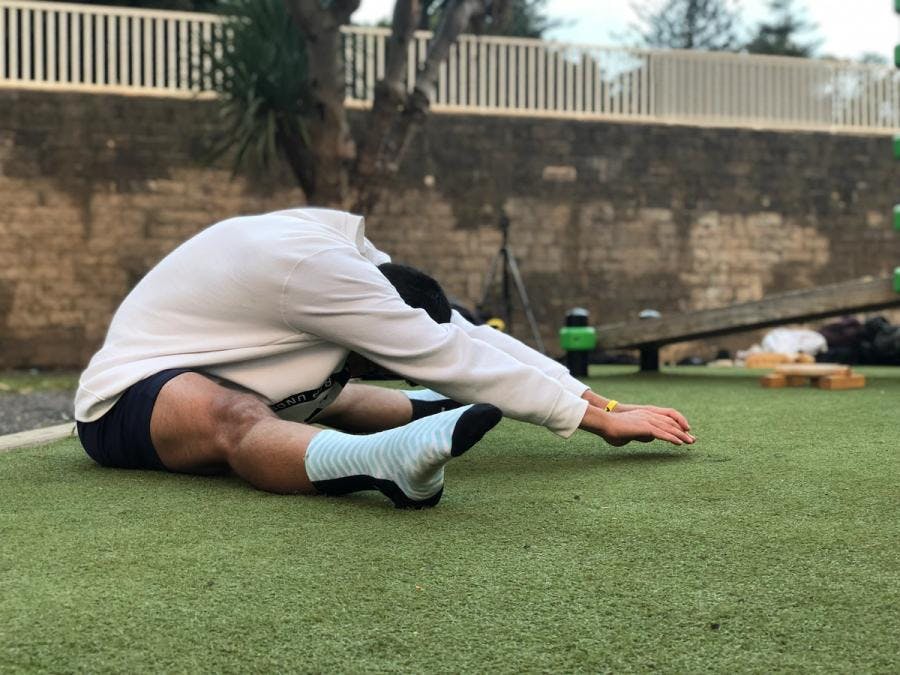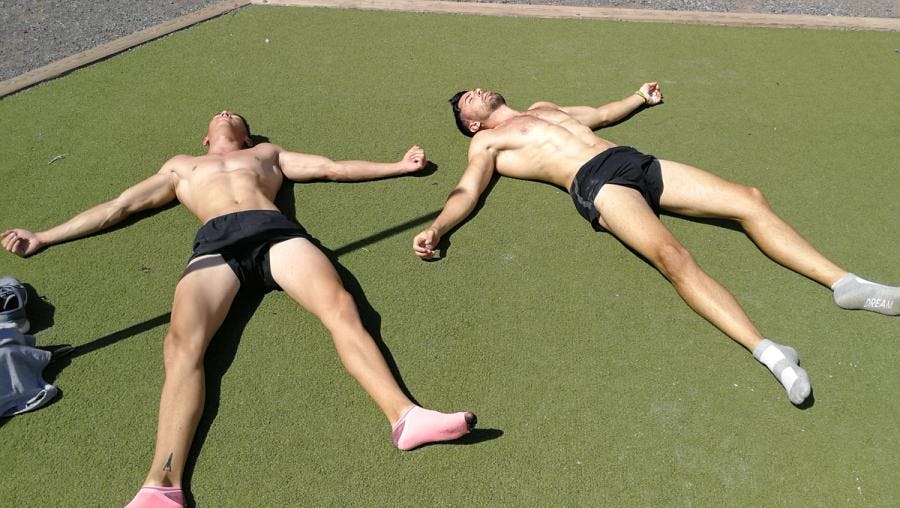
Minimalist Calisthenics training - How to do it in less than 20 minutes with no equipment

I think this is one of the most important knowledge that you can have in calisthenics, and also one of the least known themes in its athletes.
I have been thinking about why there seems to be so many injuries and pain in our community and I came to the conclusion that it is caused by 3 main reasons. Obviously we are talking about non fortuitous injuries, so we are excluding accidents.
1. In Calisthenics people commonly train with partners and friends, but not with a trainer.
When you don't have someone with experience and knowledge to guide you, you tend to go faster than you should, doing exercises with wrong form and stressing your body too much. Sometimes you try things that your trainer would forbid you or call you crazy. You don't have someone to guide you in the rhythm of your progress. And that's one of the reasons we created this app.

2. We don't work on our flexibility and mobility as much as we should.
The first mistake that we make is to not work on our flexibility and mobility with the same consistency as our strength. Our sport has not fixed movements like power lifting for example, so we need to have overall good flexibility and mobility, and if not, we are in danger of injury.
For example if you don't have good mobility in your shoulders, you won't be able to handstand correctly and you can get injured. Or if you don't have good wrist flexibility you can force them when trying to planche and get wrist or forearm pain. Here we have other examples:

3. We don't let our body time to adapt to new movements.
In an interview with Gymnastics USA National Team Coach Cristopher Sommer, he commented that tendons and ligaments need around 200 days (6 months) to completely regenerate, while muscular tissue does so in 90 days. This is only and example to the important fact that articular tissue takes much longer than muscular tissue to recover, strengthen and adapt.
He also said that Calisthenics athletes are really strong and he was impressed by us, but he saw that we go too fast without being prepared, compared with gymnasts and that's why he had seen a lot of serious injuries like bicep rupture in known athletes (like Adam Raw for example). Also you may have noticed lots of Calisthenics athletes with chronic pain in elbows, shoulders and wrists.
Having all that in mind, my proposal to avoid injuries is to be patient in your progress, letting your articular tissue adapt to every exercise before trying a more difficult one. Also when you achieve a new "trick" or difficult exercise, don't go overboard with it and start doing it 10 times a day, keep it in a couple tries a day until your body adapts. That's why our training plans in the app have a lot of levels that go very slow in progression, so we can avoid any problem. Here is an example of the distribution that you can follow:
In people who start from 0, sometimes it is needed to use this method even with basic exercises like dips (to avoid pain in clavicle or shoulders) or pull ups. Again it would consist in working on easier exercises or progressions before doing the actual exercise.
In Calisteniapp we have adopted this method to the training plans, so on the first levels you have preparation exercises that build your strength and prepare your joints for the goal of the plan. For example that's why in the muscle up plan you have exercises like skin the cat on the first levels, so you can work on your shoulder flexibility before attempting the muscle up.
4. You only search for information when you are already injured
The last mistake that we make is to wait until it is too late to do something. So if you are reading this and you don't have any injury or pain, my recommendation is that you take much into account the information in this article, and you will assure steady progress without any non desired stop.

What to do if you are already injured or in pain
In my opinion, first you have to go to your physiotherapist and follow his advice. Then analyze which exercise or movement was the one that caused the injury and how can you improve your strength, joint preparation, flexibility and mobility to avoid it happening again.
When you can train again, you will have to be humble, leave your ego to the side and start from scratch. Sometimes it can be a little "humiliating" to do really easy exercises compared to the ones you were doing before the injury, but it is the right thing to do. Start with the first progressions, the easiest ones, with the flexibility and mobility work and the exercises that strengthen the muscles involved, even if they feel to easy. From there apply the protocol that I explained before, with at least a month and a half in each level.
If you apply this correctly with patience, you will rehab your injury and forget about it.
I hope this helps you to have a long and healthy career as a Calisthenics athlete!
Join our newsletter
NEW ARTICLES EVERY WEEK
Learn everything you need to know about calisthenics
Start training calisthenics and street workout
